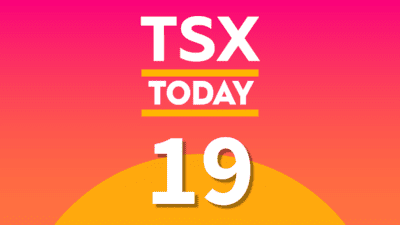While traditional mutual fund firms are hemorrhaging business, those with ETF operations continue to grow. It’s no surprise then that two of the biggest players in global financial services, BlackRock, and Vanguard, are leaders in Canadian ETF market share.
BlackRock’s iShares business here in Canada commands over 50% of the ETF assets under management ($49.6 billion as of April 30) with the rest of the players competing for second place. Right now it’s Bank of Montreal (TSX:BMO)(NYSE:BMO) with $27 billion in ETF assets, and Vanguard is a distant third at $7.6 billion. Down in sixth place is First Asset, which CI Financial Corp. (TSX:CIX) acquired in November 2015, with $1.9 billion in assets under management.
If you simply want to bet on the industry leader in order to ride the ETF wave, you’ve got to shell out American dollars in order to buy BlackRock stock. If you don’t want to play the currency game but still want to ride the exponential growth happening here in Canada as investors abandon mutual funds in favour of less costly ETFs, you’re two best choices are one of the Big Six banks, Bank of Montreal, or CI Financial, one of Canada’s leading independent financial services companies.
The answer to the question of which is the better choice, in my opinion, is unquestionably CI Financial for the sole reason that it’s not a bank. Banks are facing a future in which lending profits are likely going to decline in the coming years as housing price increases slow, reducing the demand for mortgages and equity lines of credit, while the aging population moves out of their homes into rental housing.
Fool contributor Adam Mancini recently highlighted a study from management consultant McKinsey & Company that suggests global FinTech innovation put 60% of banking profits at risk. It has the potential to be a knockout one-two punch for Bank of Montreal and all the other big banks here in Canada. CI Financial, on the other hand, has its fingers in all kinds of products and services revolving around wealth management–a burgeoning field if there ever was one.
And yes, Bank of Montreal clearly benefits from wealth management, where it was able to generate $850 million in net income in 2015. However, that’s a far cry from the $2.9 billion it did in personal commercial banking in both Canada and the U.S. Accounting for 60% of its overall business, a housing slowdown would put a serious dent in its overall profits.
CI has two segments: asset management, which includes First Asset, among others, and asset administration, the financial advisory business operated under the Assante Wealth Management brand. The two segments combined generated $773 million in pre-tax income; asset management was its profit centre, while Assante basically broke even doing its job providing the clients necessary to generate higher management fees.
In 2015 CI Financial’s assets under management increased by 10% year over year to $111.1 billion as a result of strong fund performance and $3.4 billion in net sales. The high-net-worth client has become an important part of Assante’s overall business with 62% of its $21.3 billion in client assets with families whose accounts are $500,000 or higher. Meanwhile, Assante’s fastest-growing clients are those with $1 million or more invested with its advisors.
So, what’s so important about First Asset and ETFs?
It gives CI the platform to move its clients that are currently invested in mutual funds into ETFs, while First Asset gets the Assante advisor network and $597 million in free cash flow at its disposal. While BMO might have a huge lead in ETF assets under management, CI Financial is perfectly positioned to serve both the full-service (Assante) and do-it-yourself (future digital advisor) crowds.
It’s a pure play, and, in my opinion, that’s a very good thing.







